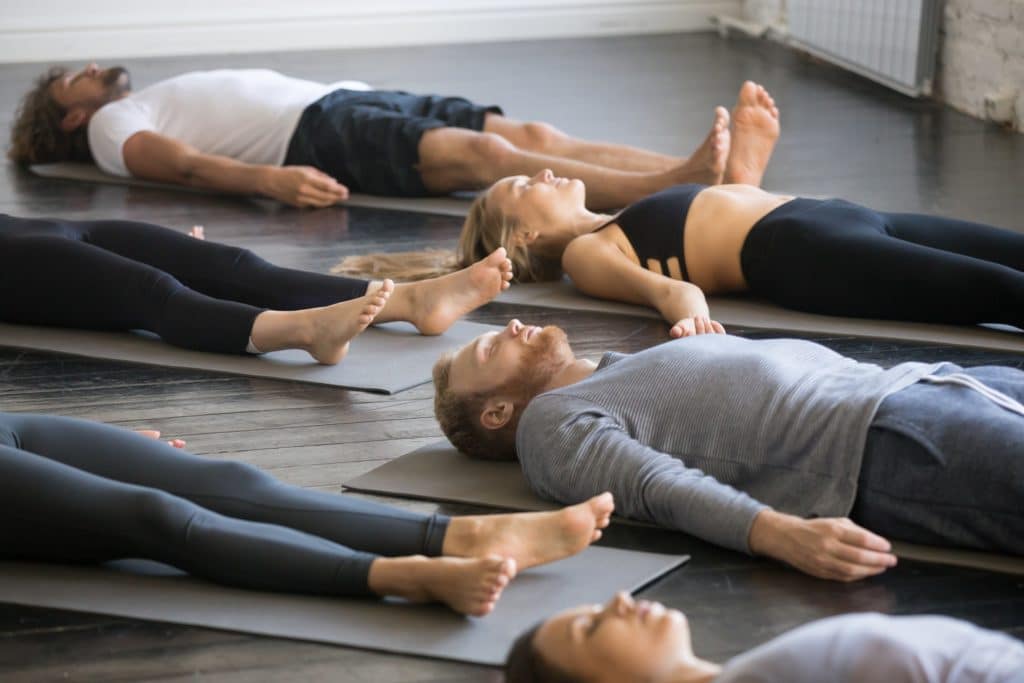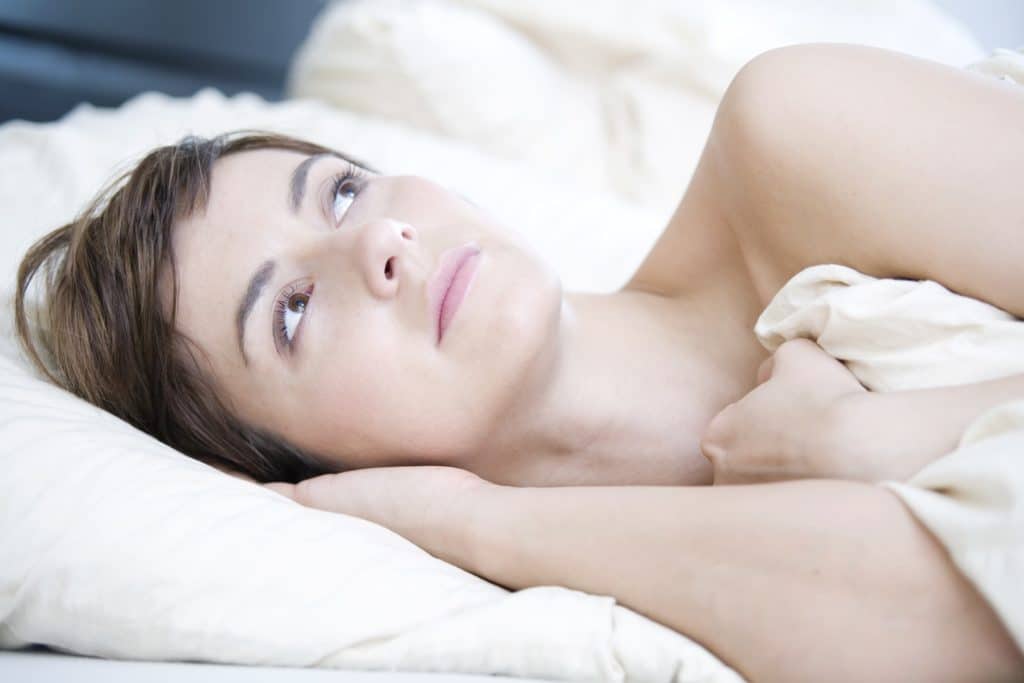Progressive muscle relaxation (short: PMR) is a method of relaxation. It is also called progressive muscle relaxation (PME), progressive Relaxation (PR), or deep muscle relaxation. One after the other are tense, aware of the different muscle groups very tightly; then, the voltage is released again, while the whole time be observed on close attention to the reactions in the body.
Table of contents
- Exercise posture
- The basic principle of tension and relaxation
The PMR comes with both physical as well as psychological discomfort to use. You can help, for example, in the case of chronic pain, sleep disorders, or an anxiety disorder.

This relaxation method is recognised as a result of many studies showing their effect scientifically. Therefore, health insurance usually the cost for a course to Learn the progressive muscle relaxation.
Background
The procedure of progressive muscle relaxation was developed in 1929 by the American physician Edmund Jacobson (1888 – 1983), after he had conducted research for twenty years at Harvard University on this topic. Jacobson noted that Stress, anxiety and nervousness with increased tension of the muscles associated. The muscle fibers, which can lead to tension are reduced. He observed that patients who were very nervous or stressed, flexed unconsciously your muscles. Frequently recurring muscle tension of this sort led, for example, to headaches and migraines. Edmund Jacobson concluded that this relation is Vice versa: The conscious relaxation of muscles leads to physical and mental relaxation. His research results have confirmed this theory.
In the early days of PMR, this technique was to learn to be extremely time-consuming and difficult, since they consisted of a myriad of instructions. You needed at that time, meetings of more than fifty of Practice to master them safely. Over the years, the method was developed further and simplified. Meanwhile, the progressive muscle relaxation, almost anyone can be learned in just a few hours. Since 1987, this relaxation technique is approved by the statutory health insurance and an integral part of the accompanying treatment of many psychosomatic disorders.
Effect
Edmund Jacobson found that the conscious relaxation of muscles acts on the Central nervous system. The activity of which is thereby lowered. So the blood is reduced, for example, the pressure, the heart beats slower and breathing calmed down. Through the regular Practice of progressive muscle relaxation also physical symptoms of Stress such as excessive sweating and increased bowel activity can be mitigated. You will feel the Exercises less nervous, increased irritability let. In acute stress situations, you feel less afraid and feels with regular use in everyday life, a total of more relaxed and balanced. Even chronic sleep disorders, and chronic pain can be alleviated with the help of progressive muscle relaxation, or even completely disappear.
About the positive impact of the PMR, many clinical trials now exist. Thus, the progressive muscle relaxation of most statutory health insurance companies as a treatment or prevention measure is offered. Also, this relaxation method in clinics and medical practices for adjunctive treatment of many mental as well as physical diseases, is used with success.
Implementation
The progressive muscle relaxation according to Jacobson includes five phases: Hinspüren, Tense, tension, Release, and Trace.
The or the Practitioner starts first in order to focus on a certain muscle group, what is referred to as the “Hinspüren”. This is not the beginning any more easily. But the more it is trained, the better this Exercise works. When Hinspüren it comes to carefully observe what is happening in the respective area of the body and what sensations are perceptible. This can be tingling, for example, Heavy or heat.
Then, the selected muscle group is tense. It should be noted that the tension is too intense, but noticeable. This state is held for five to ten seconds, wherein the one or more Practitioner focused the whole time on the tense Muscle. After the tension of the time, the relaxation follows. The attention rests while its still on the currently edited muscle area.

Started with the muscles of the right Hand. Then you work on arms, face, neck, and back prior to up to the belly. Finally, the muscle groups of the legs and feet follow.
PMR is not working with self-suggestion, such as, for example, autogenic Training, but requires the user or the user is a conscious perception of body sensations; it resembles, therefore, in Parts of the mindfulness training (Mindfulness-Based Stress Reduction, short-MBSR).
The success of PMR is growing with frequent training sessions, which should be completed daily. The muscle relaxation can be done as a short relaxation with just a few muscle groups or all muscle areas in a longer phase of the Exercise. Initially, you should allow more time, later a few minutes several times a day, with the time the relaxation effect in a targeted and aware. You should put as much as possible, but a little of your time to learn this new method. Don’t be disappointed, if not immediately, relaxation sets in, but take it slow. The method is learned and well practiced, it should be possible to feel in a few seconds, the existing tensions in the body and this alone by the learned feeling of relaxation to resolve. For it is then no longer necessary, the corresponding muscles tensing.
Exercise posture
Progressive muscle relaxation can be done Lying down or Sitting down or Standing up. So it is almost at any time in everyday life can be used. At the beginning, is usually trained in, as this is the Position, in the most people the fastest way to reach a deep state of relaxation. The sequence of the relaxation technique is internalized, it can also be performed Sitting or Standing.
The basic principle of tension and relaxation
The deep muscle relaxation it is about being mindful in the body felt, consciously tensing and relaxing of different muscle groups and the associated sensations, such as warmth, Heaviness or a tingling sensation to perceive. The Patient or the patient learns to tensions early and to actively do something about it.
The Practitioner takes a comfortable posture, in Sitting, Lying or Standing, at your leisure, and exercise progress. For example, it is started with the right fist. This is clenched for about five to ten seconds. The tension should be experienced consciously, by focusing entirely on the Muscle. A healthy “balance is learned”. This means that there may not be any tension, or strong effort. After the tension is dissolved. Relaxation occurs. Also, this should be a conscious and concentrated can be experienced.
In this way, be transferred successively to the various parts of the body targeted in tension and relaxation. Progressive muscle relaxation can be applied for quick short relaxation process, but also for the Relax of up to eight to ten muscle groups, depending on the Situation and available time frame.
Areas of application
Progressive muscle relaxation is used in a variety of diseases and ailments. So it has been proven in the case of neck tension, tension in the shoulder area, back pain and headaches and migraines. It is used for the concomitant treatment of, for example, ringing in the ears (Tinnitus), hearing loss, irritable bowel, and irritable stomach, hypertension (high blood pressure) and hormonal disorders. Also can be achieved in the lawn with the progressive muscle relaxation good results in Stress, anxiety, nervousness, restlessness, not organically related the heart and the Like.
PMR is often used in diseases with a strong psychological component, even in the case of serious mental disorders, such as, for example, is a psychosis. Accompanied by an experienced therapist or a seasoned therapist, however, is mandatory.
The muscle relaxation technique increased the efficiency and has proven effective for many people with impaired concentration, and test anxiety. Especially in today’s time, in which the pupils already in the elementary school a tremendous performance pressure on the use of the progressive muscle relaxation is a helpful tool for daily use. Because it is quick and easy to learn, can also benefit children’s already good of this relaxation method. After prolonged Practice, it can even be applied in the noisy classroom successfully, for example, immediately before a Test.

When should not be used in the progressive muscle relaxation?
In the acute stages of the Disease it is foreseeable under the circumstances of the PMR. This applies, for example, for a device that is already the onset of a migraine attack. If you suffer from low blood pressure (hypotension), you should keep prior to the application of the progressive muscle relaxation with your family doctor or your family doctor consultation, since this method of relaxation lowers blood pressure. Also in the case of muscle diseases, you should consult in advance with your doctor or health care professional if the PMR is suitable for you. (sw, kh)
